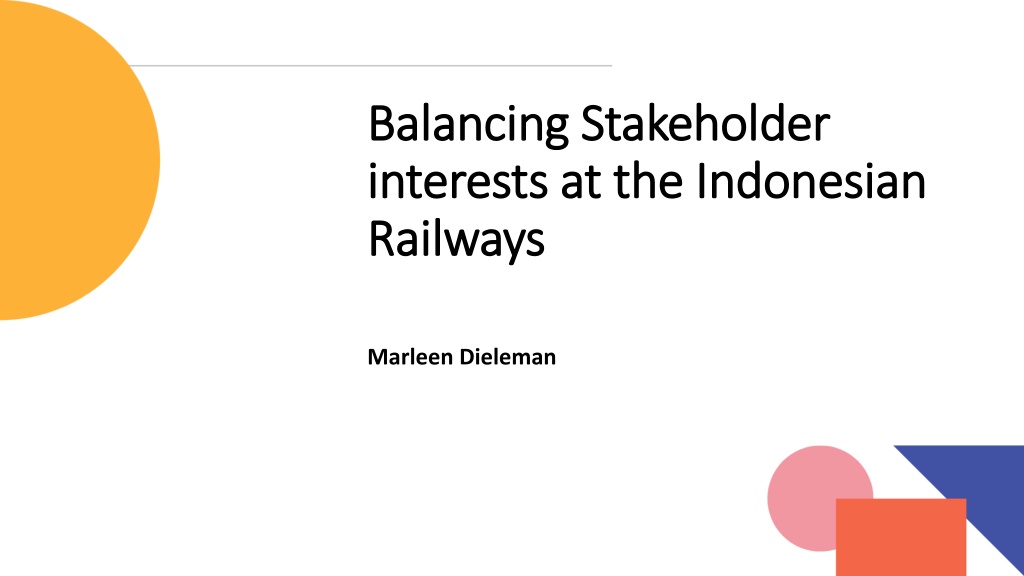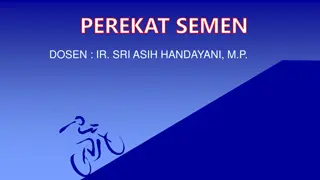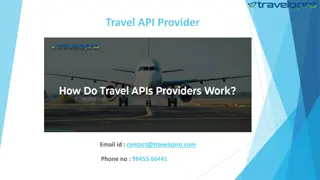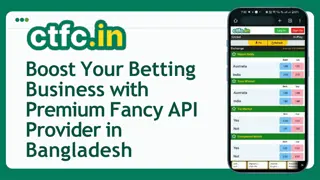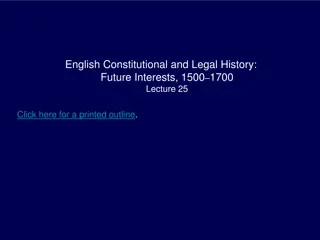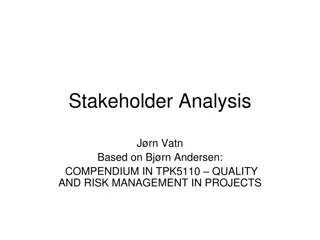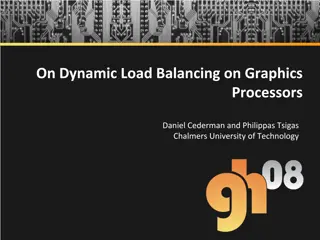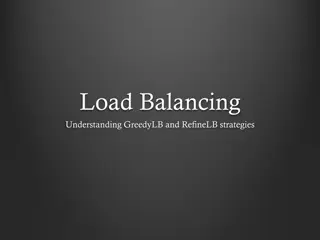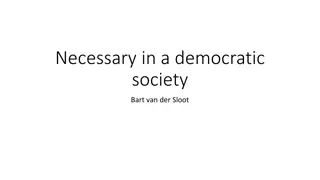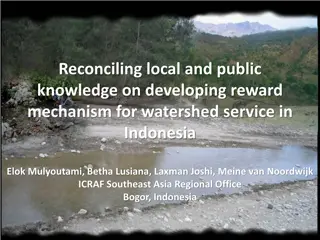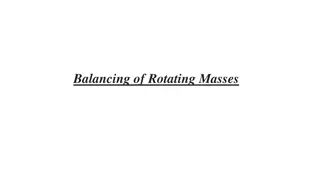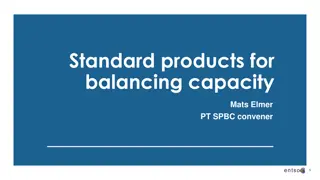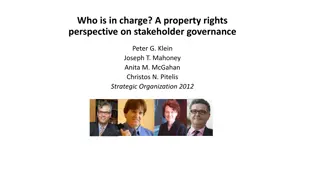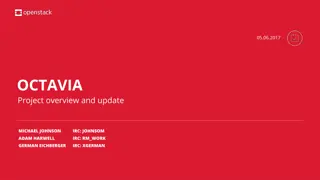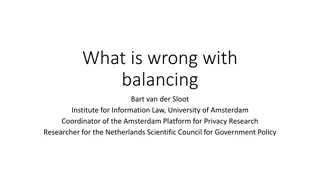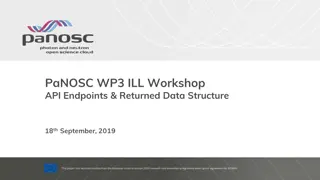Transforming Kereta Api Indonesia: Balancing Stakeholder Interests and Financial Health
Kereta Api Indonesia (KAI), a state-owned enterprise, faced challenges in balancing stakeholder interests related to providing rail transportation in Indonesia. Despite issues such as safety concerns and public image, KAI aimed to improve its services and image through a customer-focused business model. The financial health of KAI was evaluated based on its balance sheet from 2009 to 2011, showcasing fluctuations in assets over the years.
Download Presentation

Please find below an Image/Link to download the presentation.
The content on the website is provided AS IS for your information and personal use only. It may not be sold, licensed, or shared on other websites without obtaining consent from the author. Download presentation by click this link. If you encounter any issues during the download, it is possible that the publisher has removed the file from their server.
E N D
Presentation Transcript
Balancing Stakeholder Balancing Stakeholder interests at the Indonesian interests at the Indonesian Railways Railways Marleen Dieleman Ivey Publishing National University of Singapore
The Important The Important Role of Role of Indonesia s Indonesia s State State- -Owned Owned Enterprises Enterprises Indonesia as the largest market in Southeast Asia and the growth had naturally led to an increase in demand for the transportation of people and cargo. The country's existing infrastructure, including airports, roads, ports, and railroads, operated at or above capacity The city of approximately 10 million inhabitants did not yet have a subway despite decades of planning Indonesia did not score well on the Logistics Performance Index The president of Indonesia was pushing for greater infrastructure development. State-owned enterprises (SOEs) played an important role in the economy, in particular in the areas of infrastructure and transportation
Kereta Api Indonesia (KAI) was the Indonesian SOE tasked with providing rail transportation The first railway track in 1867 (during the Dutch colonizers) Emerged as a SEO after Indonesia s independence in 1945 In 1991, KAI introduced more comfortable and faster trains, their first profit In 1995, more luxurious executive class trains were introduced In 2009, Jonan joined KAI and identified KAI smain problem KAI had much potential to contribute to the Indonesian people, to provide cheap transport and help resolve the country's transportation bottlenecks. KAI's public image was not very favorable due to safety and corruption concerns. Customers were complained about overcrowded trains, delays and low service levels Kereta Kereta Api Indonesia Indonesia Api
KAIs Business Model KAI s Business Model In 2009, start to a customer-focus and KAI s vision was to be the best railway provider through its focus on customer service and meeting stakeholders expectations 2011, Jonan initiated anew logo to accentuate the desired cultural shift toward customer service and professionalism Consisted mainly of passenger transport and freight transport To increase comfort, KAI was attempting to both phase out the non-air-conditioned economy class and upgrade its remaining trains
DOES KAI FINANCIALLY HEALTHY? 2011 2010 2009 Current assets 1,824,495 2,048,493 2,251,870 KAI s Balance Sheet Summary (in Rp. Millions) Fixed assets 3,708,797 3,045,671 2,846,600 Other assets 533,118 489,435 446,033 Total assets 6,066,410 5,583,599 5,544,503 Short-term liabilities 1,238, 591 773,498 786,208 Long-term liabilities 880,623 812,292 975,684 Equity 3,948,195 3,997,810 3,782,611 Total debts and equity 6,066,409 5,583,600 5,544,503 Sales 6,094,095 5,191,554 4,838,294 KAI s Profit And Loss Summary (In Rp. Millions) Cost of sales 4,675,846 4,008,055 4,755,757 Gross profit from operations 1,418,249 1,183,499 82,527 Net profit 201,244 216,336 154,800
2011 2010 2009 2008 2007 Return on Equity 6.24 6.56 4.39 -2.33 -1.11 Return on investment 9.91 8.83 11.85 0.99 6.18 Cash Ratio 47.74 97.28 154.57 146.46 143.46 KAI s Financial Indicators Current ratio 147.42 262.04 286.42 232.60 255.80 Collection periods 39.56 34.36 13.50 33.18 39.43 Inventory turnaround 33.64 40.10 25.82 29.43 29.25 Total asset turnaround 111.90 103.86 90.79 91.97 86.39 Equity to total assets ratio 39.52 39.94 59.59 43.47 39.78
Several problem hindered the punctuality of the passenger trains, such as the arrangement of the trains, obstruction due to accidents and natural disasters, rolling stock failures and overdue maintenance work. 2011 2010 2009 Average delay (arrival of passenger trains in minutes) 39 51 35 KAI s Operational Indicators Average delay (arrival of freight trains in minutes) 85 92 115 Passenger trains arriving on time (as a percentage) 25% 24% 31% Freight trains arriving on time (as a percentage) 28% 30% 28% Number of accidents 54 74 118 Seat kilometers (in thousand) 24,398,855 25,754,853 23,416,244 Freight transported (in tons) 19,340,235 18,950,467 19,011,157 Number of employees 27,893 26,520 26,938 Number of wagons and coaches in operation 5,157 4,744 4,831 Freight ton km (in thousands) 5,052,268 7,168,667 5,486,585
KAIs Political KAI s Political Stakeholders Stakeholders In the beginning, the government provided a subsidy for economy-class fares and capped its ticket prices, although this subsidy was insufficient to operate this part of business or to maintain the company's infrastructure assets In 2011, KAI had tried to improve the quality of the workforce by raising salaries and recruiting only those people with at least high-school qualifications, in attempt to improve the service level In 1998, the government had been resisted drastic increases subsidy for KAI In 2012 KAI implemented a substantial price increase for the business class Prioritizing the business class over the economy class invited resistance from the government The Ministry of State-Owned Enterprises had requested that all SOEs return a profit and contribute to the state budget, with a long-term goal of privatizing them and turning them into global champions. The challenge is to change an ordinary government institution into a corporate system: financially, operationally, and in terms of culture
KAIs Multi KAI s Multi- -layered Customers layered Customers HOW TO SERVE MULTI-LAYERED CUSTOMER SEGMENTS? 1. the government subsidy for poor people 2. the increasingly vocal and affluent middle classes that demanded better services WHATS THE STRATEGY For middle path = balancing different interests
PREPARING FOR KAIS FUTURE PREPARING FOR KAI S FUTURE Would the public accept a price increase? In the media, many complaints are showed up. Yet, the Jonan s customer surveys showed a slow but steadilyimproving satisfaction with KAI s services. Prepare a plan that clearly stated how transform KAI into a competent SOE and balance different interests along the way
THANK YOU THANK YOU
